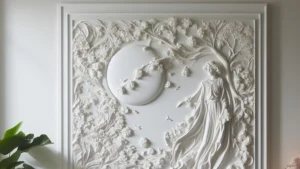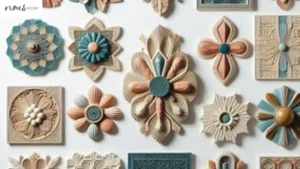Painting the plaster walls in your home can seem overwhelming if you don’t know What Kind Of Paint Do You Use On Plaster Walls. I am Mark Cutler, and with my years of experience in home decor at Nousdecor, I’m here to walk you through everything you need to know to choose the right paint for your plaster walls and get a beautiful, long-lasting finish.
Key Takeaways
- Oil-based paints are the best for sealing and protecting plaster walls due to their thicker consistency and longer drying time. They prevent absorption into the plaster.
- Always prime plaster walls before painting to create a protective barrier and improve paint adhesion. An oil-based primer is best.
- Opt for a higher sheen paint like satin or semi-gloss since plaster walls show imperfections easily. The sheen helps hide flaws.
- Lightly sand plaster before priming and painting to remove any gloss and improve adhesion. Be gentle to avoid damaging the plaster.
- Allow plaster walls to fully cure for 30-60 days before painting for the best results. Painting too soon risks trapping moisture.
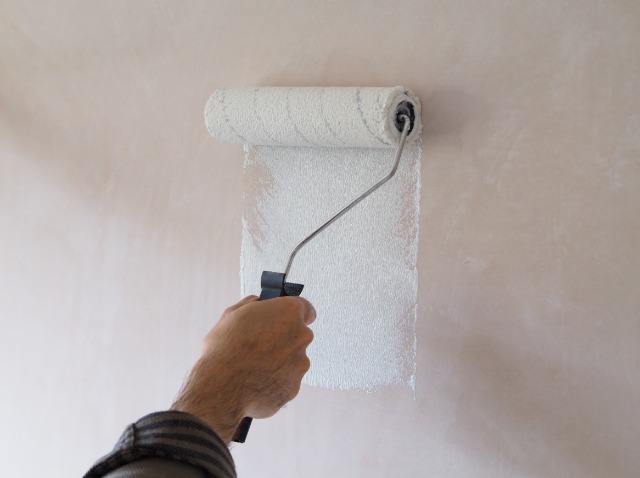
What Kind Of Paint Do You Use On Plaster Walls?
In summary, here are all of the paints for plaster that you would like to know:
- Use an oil-based paint – Oil-based enamels provide the best adhesion, durability, and smoothness on plaster. Good options are Benjamin Moore Satin Impervo or Sherwin-Williams ProClassic.
- Prime first with an oil-based primer – Priming creates a uniform sealed surface for paint to adhere to. Zinsser Cover Stain or Benjamin Moore Fresh Start are great choices.
- Lightly sand before painting – This helps remove any gloss and improves paint bonding.
- Pick a satin or semi-gloss sheen – Higher sheens hide imperfections better.
- Allow plaster to fully cure for 30-60 days before painting.
- Do a test patch first – Confirm the paint adheres well before doing the whole wall.
Why Plaster Walls Need Special Treatment
Before we get into the specifics of choosing paint, it’s helpful to understand why plaster walls can’t just be painted like regular drywall. Here’s a quick overview:
- Plaster is porous and absorbent – Unlike modern drywall, the lime-based plaster used in older homes readily soaks up paint, requiring preparation to prevent this.
- The surface is slick – Fresh plaster has a glassy, polished look. Paint has a hard time adhering without proper prep.
- Curing takes time – It takes plaster 30-60 days to fully dry and cure. Painting too soon risks trapping moisture bubbles under the paint.
- Flaws show easily – The smooth finish highlights any imperfections. Extra steps need to be taken to help disguise flaws.
Knowing these unique traits means we can take the right steps to prep plaster walls and use the most compatible paint products. Next, I’ll share my top tips for choosing paint so you can get the best results.
Use Oil-Based Paint for Plaster Walls
If there’s one golden rule for painting plaster walls, it would be this: Always use an oil-based paint!
Oil-based enamels are the best choice for painting interior plaster walls for several reasons:
- Thicker consistency – The thicker oil formula lays on top of the plaster rather than absorbing into the surface.
- Longer drying time – Oil paint stays wet longer, allowing it to self-level and hide imperfections better.
- Excellent adhesion – The oil binds incredibly well to cured plaster for long-lasting results.
- Harder finish – Oil enamel dries to an ultra-hard, more durable finish than latex paint.
For these reasons, an oil-based paint is the clear winner for achieving flawless, lasting results on finicky plaster walls. My top brand picks are Benjamin Moore Satin Impervo and Sherwin-Williams ProClassic.
Prime Plaster Walls Before Painting
An essential step with any paint job is properly priming the surface first, but this step is especially critical for plaster walls.
Primer serves several key functions:
- Seals porous plaster – Prevents the plaster from sucking moisture from the paint out.
- Provides a uniform surface – Helps smooth out imperfections so they don’t telegraph through the paint.
- Boosts adhesion – Gives the topcoat paint something to grip for an incredibly tight bond.
Always use an oil-based primer on plaster walls for maximum effectiveness. My favorites are Zinsser Cover Stain and Benjamin Moore Fresh Start.
If the plaster has significant damage or flaws, you may need to do two coats of primer to fully smooth and seal the surface. Don’t skip this step – good prep makes all the difference!
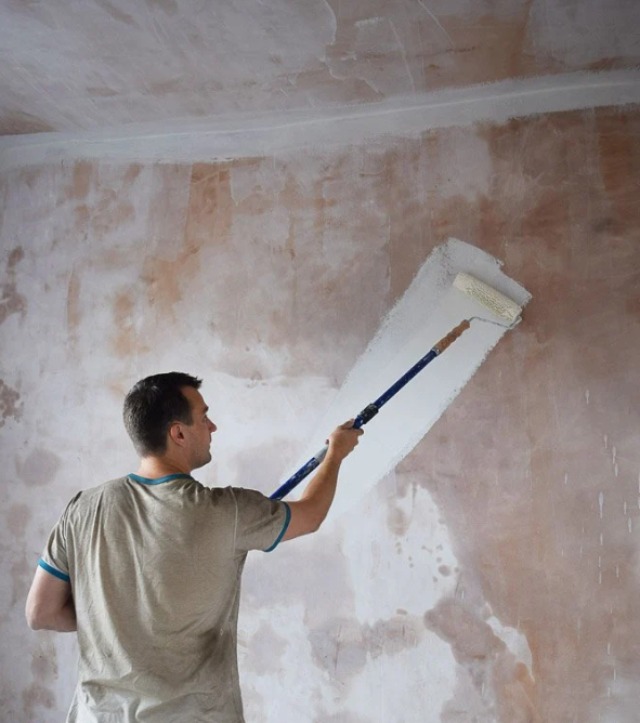
Lightly Sand Before Painting Plaster
Along with priming, lightly sanding the plaster prior to painting is also recommended. Here’s why:
- Removes surface gloss – The slight roughness helps the primer and paint adhere better.
- Opens the pores – Allows primer to penetrate into the plaster for improved sealing.
- Smooths imperfections – Sanding knocks down any burrs or nicks.
Use fine 150-220 grit sandpaper and be gentle to avoid damaging the soft plaster. Just a quick once-over to remove the sheen and smooth flaws is plenty. Wipe away all dust before priming.
Pick a Higher-Sheen Paint Finish
Another paint factor to consider for plaster walls is the sheen level. I recommend choosing a paint with a higher sheen like:
- Satin – Provides a subtle luster that elegantly catches and reflects light.
- Semi-gloss – Has a radiant, sleek sheen for a polished look.
Higher sheen paints have an advantage over flat paint when it comes to plaster:
- They highlight fewer imperfections – The gloss helps light skim smoothly over minor flaws.
- More durable – The harder finish resists scuffs better and is washable.
- Helps plaster pop – The hint of shine makes the plaster look luminous rather than dull.
So while flat paint works fine for textured drywall, opt for at least a satin sheen for plaster walls to make them really shine!
Allow the Plaster to Fully Cure Before Painting
Here’s one mistake to avoid when prepping plaster walls for paint:
Don’t paint too soon!
It’s crucial to allow new plaster to fully dry and cure before painting. Most pros recommend waiting 30-60 days after the plaster is installed before painting.
Why is this plaster cure time so critical?
- Traps moisture – Painting too soon seals in moisture, which tries to escape and causes bubbling.
- Prevents proper bonding – Paint won’t adhere well to uncured plaster.
- Can soften plaster – Moisture pull from the paint rehydrates the plaster, damaging it.
I know it’s hard to wait weeks to paint a new plaster wall, but trust me: have patience and let the plaster fully cure first!
Test Paint Products in Inconspicuous Area
One last tip – no matter how carefully you prep and choose your paint, it’s smart to do a test patch first. Paint a small, out-of-the-way area of the plaster wall decor for home before tackling the entire space.
This serves several purposes:
- Confirms the products adhere and look as expected.
- Catches any potential issues before you commit to the full wall.
- Allows you to test different sheens to pick your favorite.
Once your test patch checks out, you can proceed with confidence and paint the rest of the plaster knowing your products and techniques work beautifully!
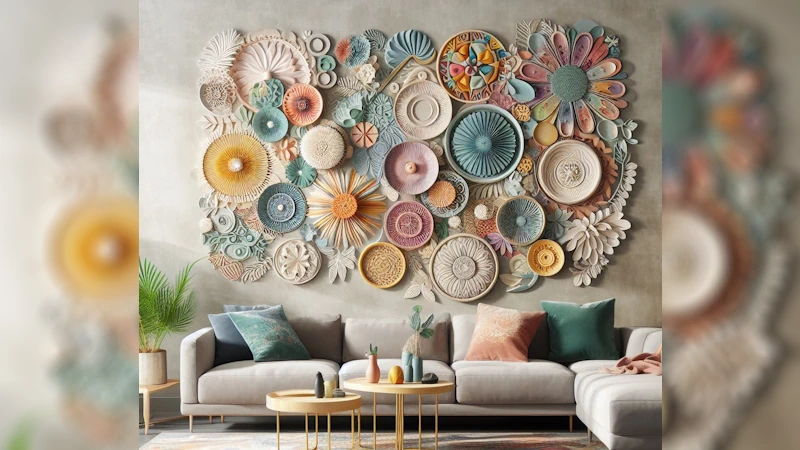
Frequently Asked Questions
Conclusion
From understanding the unique properties of plaster to choosing the right prep steps and paint for the job, I hope I’ve helped shed some light on how to properly paint your wall art selection for your house.
The key is using quality oil-based products, allowing the plaster to fully cure, and taking time to properly prepare the surface through techniques like priming and light sanding before painting.
While it may involve a little more effort compared to painting modern drywall, following my tips will help you achieve stunning, long-lasting results. Both your walls and your sense of accomplishment will look beautiful.
For more plaster decor, check out our articles on living room plaster wall decor ideas, exquisite plaster wall decor on sale, and creating plaster art on walls!


